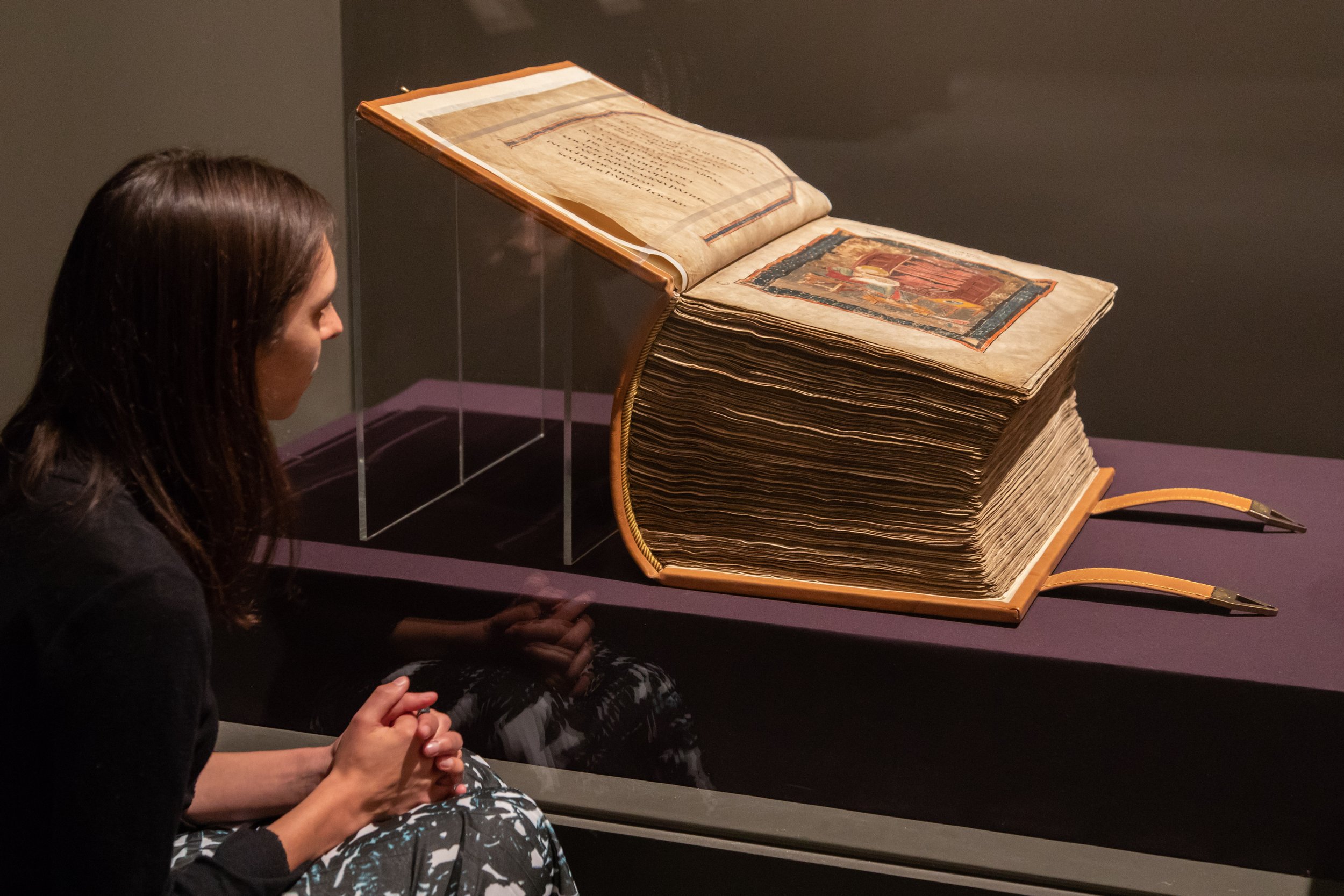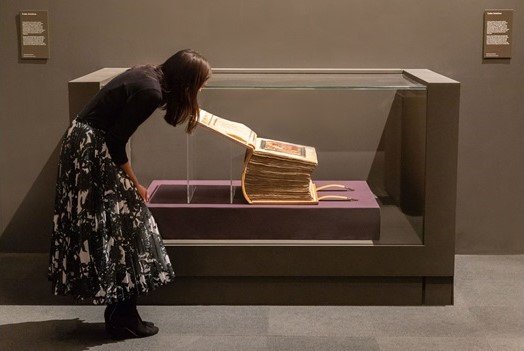Anglo-Saxon Kingdoms: Art, Word, War at the British Library, 2018-2019
/Rochester Cathedral’s most important treasure Textus Roffensis featured in the ‘once-in-a-generation’ Anglo-Saxon Kingdoms: Art, Word, War exhibition at the British Library from October 2018 to February 2019. Textus is now back on permanent display in Rochester Cathedral Crypt.
Anglo-Saxon Kingdoms: Art, Word, War was the largest ever exhibition on the history, literature and culture of Anglo-Saxon England. The exhibition at the British Library in London highlighted the key role manuscripts played in the transmission of ideas, literature and art across political and geographical boundaries, as well as the sophistication and craftsmanship of the works produced during this time.
The Anglo-Saxon Kingdoms exhibition publication edited by Claire Breay and Joanna Story is available from the British Library here.
Textus Roffensis contains the only extant copy of the first English law code. It was compiled by a single scribe at Rochester Cathedral in the 1120s, and is recognised as a manuscript to rival any in historical and cultural importance. Textus comprises over 170 individual texts including law codes, charters, records and lists. Law codes unique to Textus include Æthelberht’s Code (c. 600 CE), Hlothere and Eadric’s Code (c. 679-685) and Wihtræd’s Code (695). Others include Alfred’s Domboc (‘book of laws’ after 893), Hadbot (possibly written by Archbishop Wulfstan of York, 1002-1023), Ine’s Code (reigned 688-726), Æthelstan’s Grately, Exeter and Thunderfield Codes (c.924-939), Edward the Elder’s First code (c.901-24) and Second Code (924-5), Edmund’s First Code (942-6) and Bloodfeud Laws (c. 943-6), Æthelred’s Woodstock Code, Æthelred’s Wantage Code (997, issued to the Five Boroughs of the Danelaw and containing a good deal of Scandinavian vocabulary), the Decretals of Pseudo-Isidore (c.925-950), Norðleoda laga (‘Law of the Northumbrians’, mid-10th-century), and Æthelstan’s London Code (c. 930-40).
Textus is amongst the most significant manuscripts in the history of the Anglo-Saxon peoples.
Proto-legal instruments include the 10th-century Be blaserum and be morðslihtum (‘concerning incendiaries and murders’), and Ordal (detailing the processes of trial by ordeal), and Swerian (on the swearing of oaths). Briefer records forbid the robbery of corpses, detail excommunication curses and a charm for retrieving stolen livestock. Another deliniates the physical boundaries of the Pax (‘King’s peace’).
Codex Amiatinus on loan from Biblioteca Medicea Laurenziana © Sam Lane Photography.
Textus is now back on permanent display in Rochester Cathedral Crypt. The Dean & Chapter are thankful to the British Library for the opportunity to celebrate the significance of Textus with new audiences and in new settings.
The Cathedral hosts several large exhibitions and smaller installations each year from education to art and everything in between.









